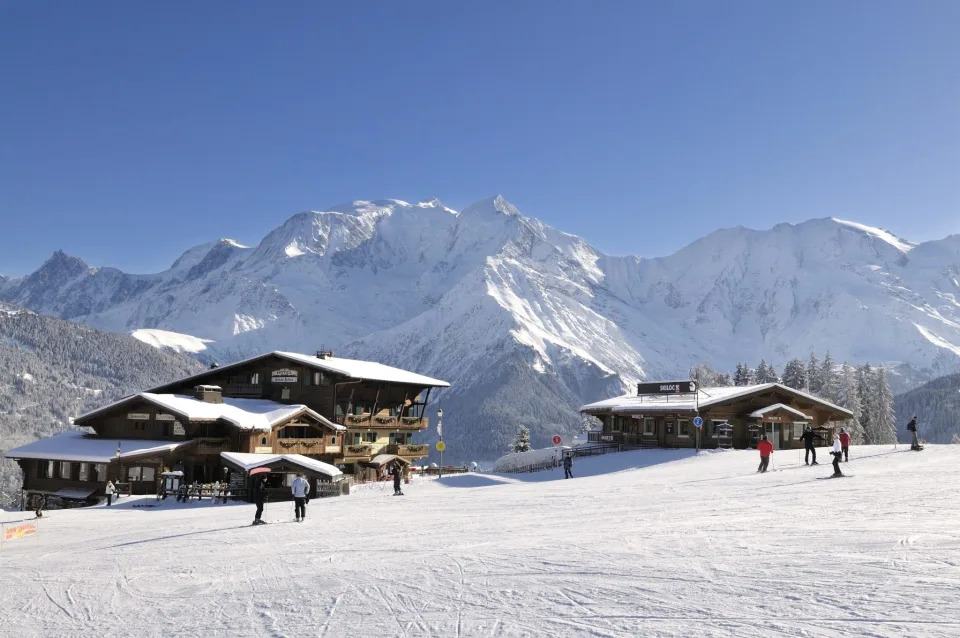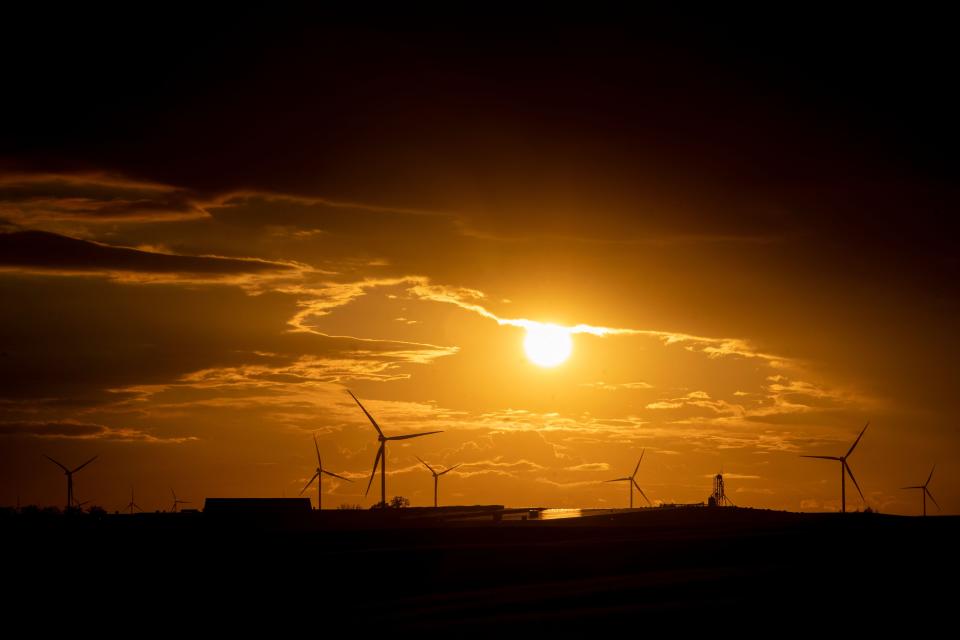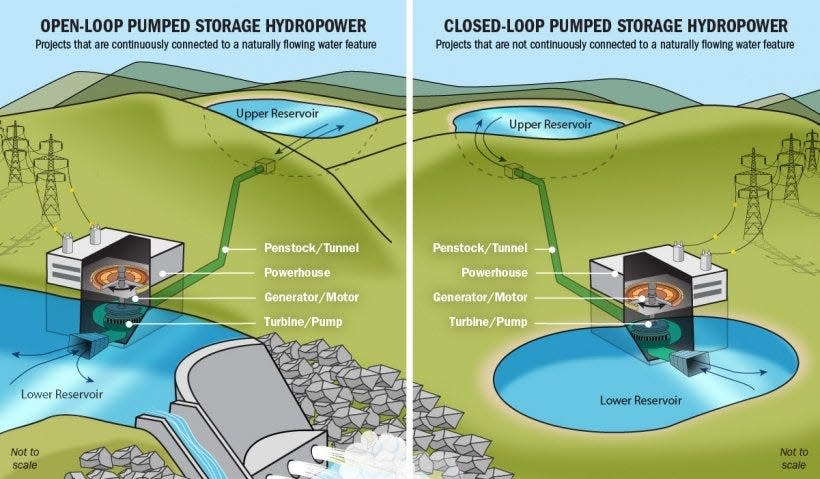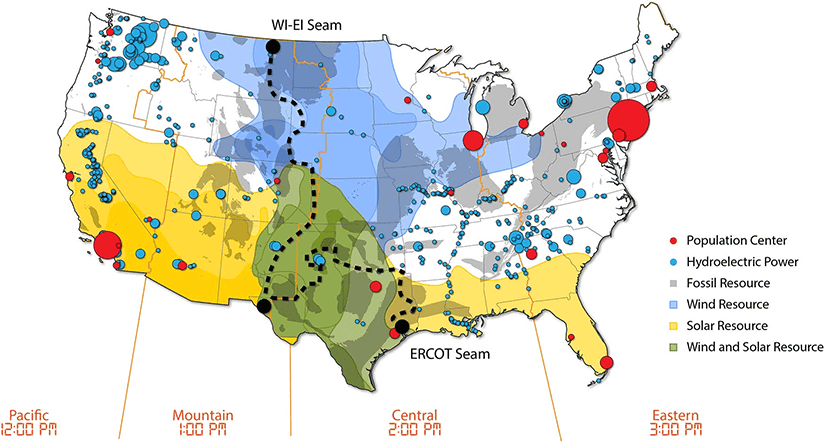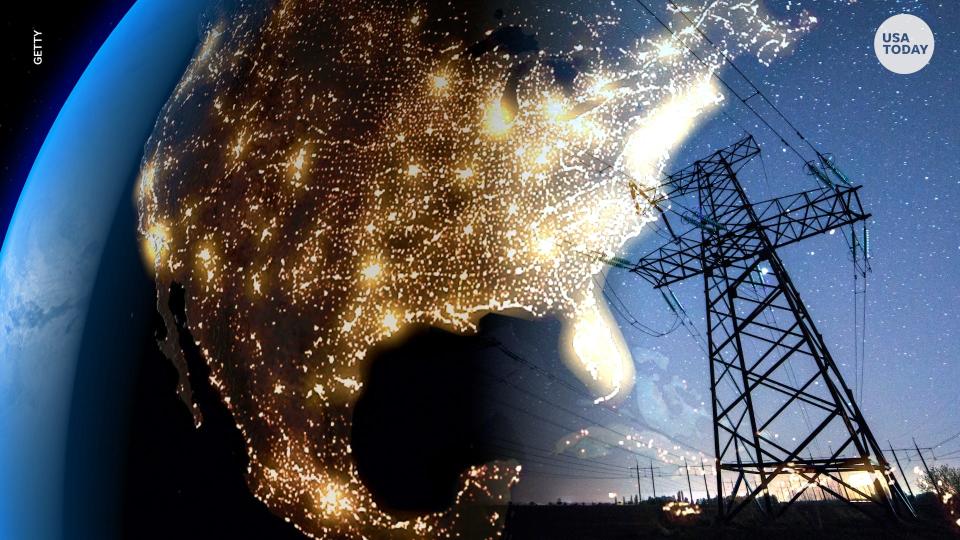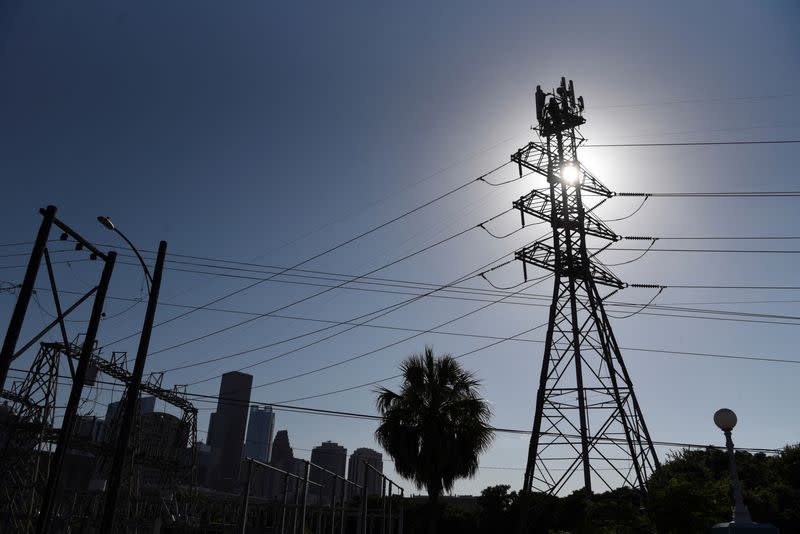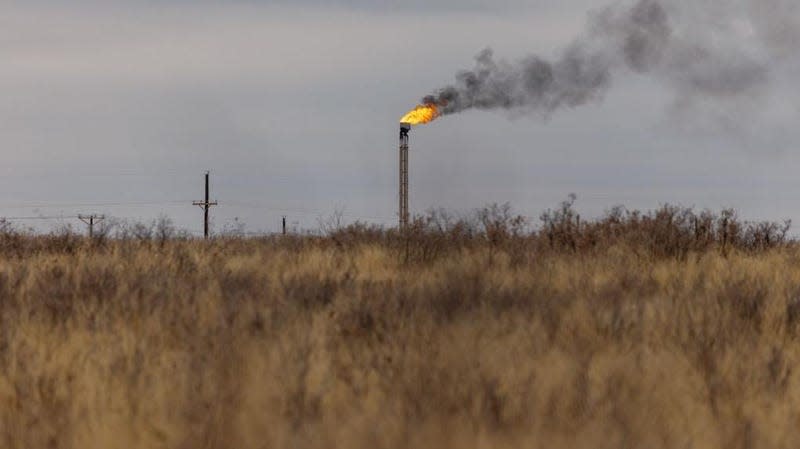Maiya Focht
Wed, November 8, 2023
Scientists put trackers on Antarctic seals to help them map the ocean floor.
The deep-diving seals uncovered a massive underwater canyon more than a mile deep.
This canyon may help scientists predict how the Antarctic ice sheet will react to the climate crisis.
Seals wear many hats — ambassadors for the Antarctic, friends to whales, and award-winning models. Their new hat has a scientific purpose, helping researchers discover the unseen parts of the ocean floor.
By strapping devices that measure depth, temperature, and salt levels to seals' heads, scientists discovered a huge underground canyon in Vincennes Bay in Antarctica that stretches up to 7,217 feet deep, or about 1.3 miles.
Clive McMahon, one of the ecologists at the Sydney Institute of Marine Science who ran the study, said the seals were "heroes" in an email to Insider.
To highlight their heroics, the scientists suggested naming the canyon Mirounga-Nuyina, after the scientific name for the elephant-seal species, in a paper published in the journal Nature Communications Earth & Environment.
These seal scientists aren't just helping us map unknown parts of the ocean; they're also helping scientists predict how the Antarctic ice sheet might react to the climate crisis, according to the study.
What this canyon can show us about the future of Antarctica's icePerforming marine research in Antarctica can be complicated by intense weather.Joseph Marlow
Understanding ocean geography helps scientists predict how Antarctica's ice sheet has reacted to global climate change in the past. Like how the Grand Canyon shows the pathway of an ancient river, these underwater features also give us an idea about how water moved in the past.
"By mapping these deep troughs and mountain ranges, we have therefore added a key piece of the puzzle to help understand how the East Antarctic Ice Sheet may have responded to past change and how it may do so in the future," Fausto Ferraccioli, who studies these underwater formations but was not involved in the study, told NBC.
They also give scientists an idea of the thinner points of the Antarctic ice sheets, cluing them into what is more at risk of melting. The researchers told the Australian Center for Excellence in Aquatic Science, which contributed to the study, that water from the canyon could move around the ice sheet, which might melt it more quickly when it's warmed by climate change.
"This knowledge is essential for scientists trying to measure ice-sheet melt rates," McMahon, the lead researcher on the paper, told the ACEAS.
How they got the hat on the seal The trackers were adhered to the fur on the seals head, which the researchers said shed annually.Clive McMahon, IMOS Animal Tagging
Because of extreme temperatures and pressure deep underwater, it's difficult to build and operate ships that can dive into the depths of the oceans and return intact. That's where deep-diving seals come in.
Antarctic seals, such as the 50 Weddell seals and 215 southern elephant seals they tagged, regularly travel to great depths of the ocean.
In 2021, the researchers from the seal study suggested that placing sensors on the animals, which were headed down into the water anyway, could be a cheaper and more effective way to map the features of the Antarctic Ocean.
They did this by attaching the sensors "with adhesive to the hair on the seals' heads." In response to concerns about the animal's well-being, the Australian Antarctic Program Partnership, a partner in the study, said on X that seals shed this hair each year, which meant the seals performed their duty without any pain.
Bear Trapped in Tiny Cage Alone at Bile Farm for 20 Years Is 'Finally Free' After Her Rescue
Kelli Bender
Wed, November 8, 2023
Rescuers moved Na the Asiatic black bear from her cage at a bear bile farm in Vietnam to a large, open habitat at a sanctuary

World Animal Protection / One Touch Connections
For the first time in 20 years, Na the bear has choices.
Until October 17, the Asiatic black bear lived in a tiny cage at a bear bile farm in Vietnam bear Ho Chi Minh City, the same place she had been for the past 20 years.
Rescuers from World Animal Protection talked to the bear's owner and convinced them to surrender Na, whose name means custard apple.
World Animal Protection works with Vietnam's Forest Protection Department (FPD) on a monitoring program that seeks out bears who used to be part of the bear bile industry in Vietnam. The country banned bear bile farming — keeping bears captive to remove their bile for medicinal purposes — in 2005 but allowed farmers to keep their bears.
Through the monitoring program, World Animal Protection and the FPD inspect former bear bile farms, allowing the organizations to speak to the farmers and work to convince them to surrender their remaining bears to rescuers.
Related: James Cromwell Is Helping an Animal Group Build a Sanctuary to End Bear Bile Farming in Vietnam
This is what happened to Na. After visiting her farm every year since 2019, World Animal Protection and FPD got permission to move Na to a sanctuary in the country. Na, who was the remaining bear on the farm on the day of her move, left her small cage with little natural light behind and upgraded to FOUR PAWS' bear sanctuary in Ninh Binh, Vietnam, where she lives in a semi-wild habitat with 45 other Asiatic black bears.
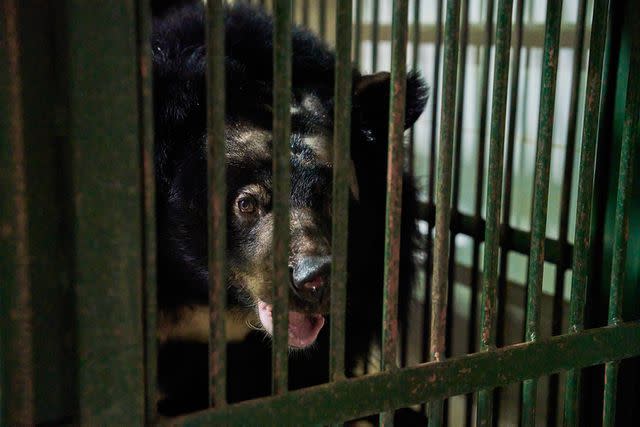
World Animal Protection / One Touch Connections
World Animal Protection and FOUR PAWS pooled resources to execute the rescue and transport Na to the sanctuary.
"We're thrilled that Na will finally be free after suffering for so long. For more than 20 years, she was unable to feel the sun on her back, breathe fresh air, or explore like all bears should. World Animal Protection continues to work tirelessly with our partners to ensure more bears like Na are released to sanctuaries," Liz Cabrera Holtz, a senior programs manager with World Animal Protection US, said in a statement.
Related: Rescuers Save 5 'Broken' Bears from Tiny Cages at Bile Farm so Animals 'Can Begin Living'
Unfortunately, Na's struggles are not entirely over. The bear arrived at the sanctuary in poor health with broken and infected teeth, eye issues, fur loss, heart disease, and degenerative bone disease. FOUR PAWS' sanctuary is working to help Na recover and enjoy her retirement years.
"She suffers from multiple severe health issues commonly seen in bile bears, such as chronic osteoarthritis, dental, liver, and heart disease," Barbara van Genne, the director of the wild animals department at FOUR PAWS, said in a statement. "Na will have to have surgery for suspected glaucoma in one of her eyes."
Never miss a story — sign up for PEOPLE's free daily newsletter to stay up-to-date on the best of what PEOPLE has to offer, from juicy celebrity news to compelling human interest stories.
"Our experienced team at the bear sanctuary in Ninh Binh will now provide her with all the care she needs. Na's story is a reminder that bears are still suffering on bear farms in Vietnam. Help often comes too late, as many die alone and in pain. The Vietnamese authorities must swiftly close all remaining bear farms to give as many bears as possible a second chance at a better life," she added.
To learn more about World Animal Protection and FOUR PAWS and to help animals like Na, visit the organizations' websites.
Watch rare footage of wolf hunting sea otter in Alaska at low tide
Carys Matthews
Tue, November 7, 2023

two photos showing wolves carrying sea otters in their jaws
Wolves on the Alaskan coast now regularly kill and eat sea otters and harbor seals, scientists have discovered. The finding suggests that the coastal wolves can adapt their hunting behavior — and may have developed unique strategies to prey on marine mammals when food on land is scarce.
The study into coastal wolf hunting behaviour began in 2016 when scientists spotted a solitary wolf carrying a sea otter carcass at Swikshak Bay. In 2018 and 2019, scientists again observed wolves carrying sea otter carcasses. However, whether the wolves were hunting or scavenging was unclear.
Then in 2021, three wolves (Canis lupis) were observed hunting and eating an adult sea otter (Enhydra lutris) during low tide. The researchers examined the kill site and found a pool of blood where the sea otter was likely killed.
According to the study, published Oct. 31 in the journal Ecology, the presence of blood indicates the sea otter had been alive when ambushed by the wolves, as opposed to being scavenged which would not produce fresh blood pooling.
Related: Are dogs smarter than wolves?
The findings suggest coastal wolves in Katmai may focus their hunting efforts at sites where prey is most predictable, such as tidal streams or rocky islands. The team also found that wolf predation coincided with low tide cycles — indicating they had developed an awareness of where and when the sea otters were spending time on land.
"We have seen that coastal wolves sometimes hunt alone or in partial packs and that individual wolves and packs may have different hunting strategies or target certain prey depending on where they are," Kelsey Griffin, lead author of the study and National Park Service wildlife biologist, told Live Science. "It shows that wolves are an important linkage between terrestrial and marine ecosystems. This study reframes how we think about wolves — it shows they’re not just terrestrial."
Researchers have been monitoring the growing trend of wolves hunting marine prey on Alaska’s Katmai Coast since 2015. Their latest research builds on a study published earlier this year in the journal PNAS that revealed wolves on Pleasant Island were hunting and killing sea otters as a primary food source after eradicating the deer population.
"This is really exciting documentation of behaviors we believe have never been directly observed by scientists," Ellen Dymit, a doctoral student at Oregon State University, said in a statement. "It kind of forces us to reconsider the assumptions that underlie a lot of our management decisions and modeling around wolf populations and populations of their prey, which often assume that wolves depend on ungulates, like moose and elk."
RELATED STORIES
—1st of its kind footage shows guard dogs saving sheep from puma attack on a pitch black mountain
—Mind-controlling parasite turns wolves into pack leaders
—More than 10 billion snow crabs starved to death off the coast of Alaska. But why?
In future work, the scientists want to expand their studies to analyze the behavior of wolves from Lake Clark National Park, Glacier Bay National Park and Kenai Fjords National Park.
"Wolves are highly intelligent so it makes sense they would adapt, although the solitary wolf hunting behavior we’re seeing are unique to coastal wolves," Griffin said. "In addition to a more diverse prey base, it is unique in that a single wolf was successful in taking down large prey such as a harbor seal compared to interior wolf activity which typically involves a pack effort to kill ungulates such as moose."
Researchers now plan to explore how sea otter density impacts the diets of wolves on an individual and pack level.
"In terms of how wolves could change the nearshore ecosystem, further study is needed," said Griffin
Shocking study finds exposure to one seasonal factor is comparable to smoking a whopping seven cigarettes a day
Erin Feiger
Wed, November 8, 2023

Nicotine kills. This is a statement that likely made many of us decide not to smoke or to quit smoking. However, it turns out that simply breathing the air outside can wreak just as much havoc on our health.
What’s happening?
The effects of Earth’s rising temperatures — wildfires in particular — are a major danger to human health.
In the past two decades, air quality in the United States has improved due to policies such as the Clean Air Act. However, the increase in frequency and severity of wildfires due to rising temperatures is undoing much of it, according to Marshall Burke, an associate professor of Earth System Science at Stanford.
A study by the Stanford Woods Institute for the Environment reports that 15 to 20 years ago, only up to 10% of PM2.5 pollution — fine inhalable particles with diameters 2.5 micrometers or smaller — was from wildfire smoke, but in recent years, the national level has risen to 25%, with areas in the West reaching 50% in fire-heavy years.
Why is this increase concerning?
The higher the PM2.5 levels in the air, the worse the Air Quality Index (AQI) will be. Kari Nadeau, professor of Pediatric Food Allergy, Immunology, and Asthma at Stanford, explains that a wildfire smoke–induced AQI measurement of 20 is equivalent to smoking one cigarette a day, and an AQI of 150 for several days — if someone were outside the entire time — is equivalent to around seven cigarettes a day.
She further points out that even if you stay inside, the polluted air could be leaking in. Moreover, the analogy doesn’t account for toxins in the air — like those from burning cars and buildings — caused by wildfires that may go beyond the dangers of cigarettes.
Exposure to wildfire smoke for more than five days can cause strokes as well as damage to the lungs, blood, and heart, with marginalized communities, children, people over 65, and pregnant women all being at higher risk.
What can you do to protect yourself from wildfire smoke?
Stay inside as much as possible, and use a HEPA air filter in your home. If you have to go outside, wear a mask and limit your activity.
For the bigger picture, we can work to lessen the frequency and severity of wildfires by slowing Earth’s overheating by avoiding single-use plastics, integrating clean energy at home, and limiting our burning of methane gas by taking public transportation, riding a bike, or upgrading to an electric vehicle.
New report uncovers dirty truth about beloved toilet paper brands: ‘Must take urgent action’
Erin Feiger
Wed, November 8, 2023 at 4:15 AM MST·2 min read
The Natural Resources Defense Council released its fifth edition of the “The Issue with Tissue” report, and it airs the dirty truth about some of our most used personal cleaning products — specifically toilet paper.
Since its initial report in 2019, a lot has changed with the paper product, but the NRDC points out that perhaps the biggest change is the disparity between the “leaders and laggards.”
While many sustainable brands have emerged in response to the tissue issue, the three biggest producers in the United States are still dragging their feet. Procter & Gamble, Kimberly-Clark, and Georgia-Pacific, who are responsible for brands like Charmin, Cottonelle, and Quilted Northern, perpetuate the system that wreaks havoc on the boreal forest in Canada and its inhabitants, threatened species, and carbon stores.

This graphic features a limited selection of the brands reviewed in “The Issue with Tissue” Fifth Edition scorecard. Image Credit: NDRC
Shrink That Footprint reports that toilet paper has such a huge negative impact on our carbon pollution because 80% of manufactured toilet paper — including brands like Charmin, Cottonelle, and Quilted Northern — is made from virgin forest fiber.
A virgin forest is an old-growth forest that has never been logged. Trees in virgin forests are powerful carbon sinks that absorb vast amounts of planet-warming carbon dioxide. This makes them one of our biggest helpers in stopping Earth’s overheating, and their loss is devastating for all of us.
A report by the Environmental Paper Network says that according to the UN Food
and Agriculture Organization, deforestation accounts for 25% of annual carbon pollution caused by human activity.
Shrink That Footprint further reports that an estimated 27,000 trees are cut down daily to make each ton of toilet paper. When the trees are cut down, not only is the carbon they are storing released, but there is also no longer a forest to absorb more carbon.
To add insult to injury, toilet paper is also typically packaged in plastic, a product of which about 40 million tons are thrown away annually in the U.S. Only about 5% is recycled, and the rest ends up in the ocean and landfills.
The point of the NRDC report is the importance of using recycled or more sustainable materials like bamboo for toilet paper and other paper products.
“By making toilet paper from ancient forests essential to the climate fight, tissue companies are flushing away our forests and our planet’s future,” said Shelley Vinyard, NRDC’s Boreal Campaign Manager and co-author of the report. “Instead of exacerbating the climate crisis, companies like Procter & Gamble must take urgent action to create more sustainable products.”
Heroic couple shares remarkable before-and-after photos after planting 2 million new trees in the Amazon: ‘We need to replant the forest’
Rick Kazmer
Tue, November 7, 2023

Brazilian couple Sebastiao and Lelia Salgado have planted more than two million trees over 20 years in an effort to resurrect the subtropical paradise that once existed on Sebastiao’s family property when he was a child.
The results couldn’t be more stunning.
Photos taken of the land in 2001 show acres of brown desolation. Sebastiao, a professional photographer, discovered the devastation in the late 1990s when he returned from a troubling assignment covering genocide in Rwanda, The Guardian reported.
“The land was as sick as I was — everything was destroyed,” he said to The Guardian.
Fast-forward to 2019, and the same aerial view shows lush trees of 290 different species — a forest that was destroyed when the property was clear-cut.
The before-and-after images are completely remarkable. (Editor’s note: On desktop, it may be necessary to expand the video into full screen, or open it at Facebook, to avoid any cropping.)
It was Lelia who first had the idea to start replanting the trees, BRIGHTVIBES reported. It was like hanging out the welcome sign for insects, birds, and other animals that started returning to the land once the trees started to grow again.
Their work highlights the positive impact trees have on the planet and for people. And aiding the green growth is something mostly anyone can do by planting a tree or finding unique projects that put seeds in the ground.
The planet has about three trillion trees, part of nature’s system for cleaning dirty air — something humans have been making in abundance during the last couple hundred years. In 2015, the news site Science reported that Earth loses about 15 billion trees a year for paper products, farming, and other human-related activities.
So, the couple’s success in Brazil has broader implications.
One mature tree absorbs more than 48 pounds of air pollution a year, according to the Arbor Day Foundation. It will provide clean, breathable air for up to four people. The Salgados have multiplied that impact by millions.
“There is a single being that can transform CO2 to oxygen, which is the tree. We need to replant the forest,” Sebastiao said to BRIGHTVIBES.
Trees are now thriving on Sebastiao’s 1,740 acres, a former cattle ranch. Tens of thousands of people have taken part in more than 700 educational projects on the land. As part of the restoration, eight natural springs on the property have “come alive” while temperatures have cooled. Hundreds of plant, animal, and reptile species have come home, a video on BRIGHTVIBES notes.
“[W]hen we began to [plant trees], then all the insects and birds and fish returned and, thanks to this increase of the trees, I, too, was reborn,” Sebastiao told The Guardian.
Arnold Schwarzenegger makes bold statement about climate change in recent interview: ‘They are not gonna go anywhere’
Wed, November 8, 2023

Arnold Schwarzenegger has had many roles in his life — bodybuilder, movie star, Governor of California — but his most recent is climate change activist. And as such, he would really like everyone to stop using the term “climate change” to describe the ongoing destruction of our planet.
“As long as they keep talking about ‘global climate change,’ they are not gonna go anywhere. ‘Cause no one gives a s*** about that,” Schwarzenegger told CBS during a May interview. “So my thing is, let’s go and rephrase this and communicate differently about it and really tell people we’re talking about pollution. Pollution creates climate change, and pollution kills.”
Ultimately, it is Schwarzenegger’s optimism about the future of our planet that has led him to disagree with the branding around the issue. He believes that the general public can be convinced to care and take action, provided that the issues are communicated effectively.
And the data backs up his point of view. The Cool Down’s own proprietary data stack, GreenScreen, has provided a lot of information on how people engage — or, as Schwarzenegger points out, fail to engage — with environmental news.
One of those findings is that this type of news reaches a six times larger audience when it appeals to people’s self-interest.
While “climate change” might sound to people like a large-scale, intractable political issue that is completely out of their hands, “pollution,” the alternative terminology that Schwarzenegger suggests, is much more tangible — an easily imaginable, visible problem that negatively impacts you wherever you encounter it.
Schwarzenegger doubled down on this sentiment later in the interview, highlighting his own relatable self-interest in describing why he is fighting to save our planet.
“I’m into having a healthy body and a healthy Earth,” he said. “That’s what I’m fighting for. And that’s my crusade.”
Japanese scientists accidentally discover virus in insects that only kills males
Bryan Ke
Tue, November 7, 2023
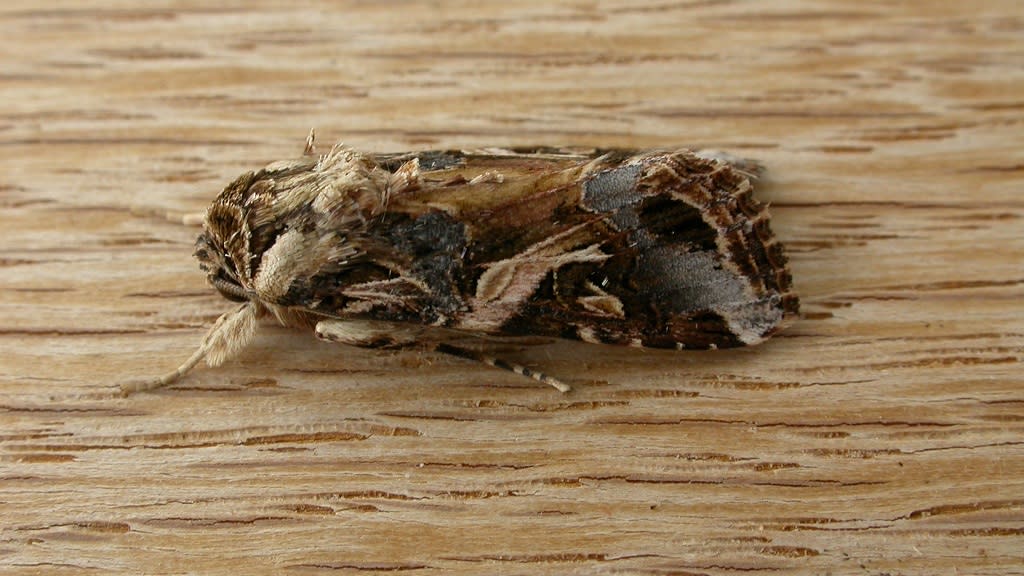
[Source]
A group of scientists from Minami Kyushu University in Miyazaki Prefecture, Japan, accidentally discovered a virus that only targets male insects, a discovery that could, one day, potentially help control the populations of disease vectors like mosquitoes.
A caterpillar: The discovery of the virus, later named Spodoptera litura male-killing virus or SLMKV, all happened accidentally after Misato Terao, a research technician at the university, found a green caterpillar, identified as a tobacco cutworm, eating impatiens inside the campus greenhouse, according to The New York Times.
Instead of properly disposing of the intruder, Misato decided to bring the caterpillar to the university’s insect physiologist, Yoshinori Shintani, who thought that it would be a good feeder for the other insects.
Startling discovery: Yoshinori checked back on the caterpillar days later after putting the insect with the others. To his surprise, there were 50 moths that all turned out to be female.
Trending on NextShark: Ex-UCLA gymnastics star Katelyn Ohashi faces backlash for Halloween costume
Curious about the findings, Yoshinori decided to breed the female moths from the greenhouse with male moths he found in his home. After going through the process, he discovered that only three males were born in the 13-generation descendants of the moths.
With this new information, Yoshinori and his colleague, Daisuke Kageyama, a researcher at the National Agriculture and Food Research Organization in Japan, believed that they had discovered a “male killer” among their insects.
Going further: Following an experiment to determine the cause of the phenomenon, the group concluded that they were dealing with a virus after the genetic analysis showed telltale signs of one. They also tried to eliminate the “male-killing” effect with antibiotics, which did not yield a positive result as the treatment is only effective against bacteria.
Trending on NextShark: Chinese woman flees US after deadly Porsche 911 crash in Washington
Only two kinds of male-killing virus have been documented and SKLMV may have evolved separately, according to The New York Times.
The Japanese scientists noted that the maternally inherited virus they found were from the Partitiviridae family, but they stressed in the study that “it was unknown whether male-killing viruses were restricted to Partitiviridae or could be found in other taxa.”
They also found that SLMKV is infectious and inheritable after some tobacco moths were infected. The result showed that the next generation produced more females, while the following generations contained no males.
Trending on NextShark: Japanese scientists accidentally discover virus in insects that only kills males
The scientists believed that the virus’s effect was reignited due to the caterpillar’s environment being in the perfect climate – not too cold for the tobacco cutworms and not too hot for the SLMKV.
Sharing the news: After the discovery, Yoshinori, Daisuke, Misato and other researchers documented their findings in a study published in The Proceedings of the National Academies of Sciences (PNAS) on Monday.
Potential controller: The latest discovery could help control the population of the agricultural pests to which the tobacco worms are related.
Trending on NextShark: ‘Most beautiful yoga grandma in China’: 78-year-old woman goes viral for her physique
This discovery could also help push forward the quest to find a “female killer” that could prove useful in keeping the population of disease vectors like mosquitoes under control.

